Rachel Manija Brown's Blog, page 3
August 18, 2025
The Disaster Days, by Rebecca Behrens
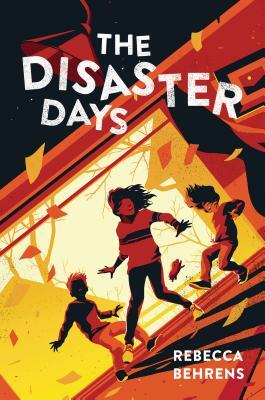
13-year-old Hannah, who lives on a tiny island off Seattle, is excited for her first babysitting job. Then a giant earthquake hits, cutting the island off from the mainland... and leaving Hannah alone in charge of two kids in a devastated landscape.
Hannah is not having a good day. She was recently diagnosed with asthma, forcing her to drop out of soccer and always carry an inhaler. Her best friend Neha, a soccer star, is now hanging out more with another soccer girl than with Hannah. Hannah forgets to bring her inhaler with her to school, and her mom doesn't turn around the car to get it as Hannah is desperate not to be late. When she arrives for her babysitting job after school, minus her inhaler (no doubt looming ominously on the mantelpiece at home, along with Chekhov's gun), she gets in a huge fight with Neha over text and the girls say they no longer want to be friends...
...just as a giant earthquake hits! Hannah gets her charges, Zoe and Oscar, to huddle under a table (along with their guinea pig) and no one is injured. But the windows break, the house is trashed, and the power, internet, and phones go out. The house is somewhat remote, an all-day walk from the next house. What to do?
Hannah is a pretty realistic 13-year-old. She's generally sensible, but makes some mistakes which are understandable under the circumstances, but have huge repercussions. She enlists the kids to help her search for her phone in the wreckage of the house, and Zoe immediately is severely cut on broken glass. The kids freak out because their mom (along with Hannah's) is on the mainland, and Hannah calms them down by lying that she got a text from their mom saying that she's fine and is coming soon. The next morning, she lets Oscar play on some home playground equipment. Hannah checks the surrounding area, but doesn't check the equipment itself. It's damaged and breaks, and Oscar breaks his leg. So by day one, Hannah is having asthma attacks without her inhaler, Zoe has one arm out of commission, Oscar is totally immobilized, and there's no adults within reach.
Well - this is a HUGE improvement on Trapped. It's well-written and gripping, the events all make sense, and the characterization is fine. It was clearly intended to teach kids what can happen during a big earthquake and how to stay as safe as possible, and the information presented on that is all good.
But - you knew there was a but - as an enjoyable work of children's disaster/survival literature, it falls short of the standards of the old classic Hatchet and the excellent newer series I Survived.
The basic problem with this book is that it has a very narrow emotional range. For the entire book, Hannah is miserable, guilty over her friend breakup and the kids getting hurt, worried about her parents, and desperately trying to keep it together. The kids get hurt so seriously so early on that they never have any fun. Even when Hannah tries to feed them S'Mores to cheer them up, nobody actually likes them because they're not melted!
The I Survived books have much more variety of emotional states and incidents, as typically the actual disaster doesn't happen until at least one-third of the way into the book. The kids have highs and lows, fun moments and despairing moments and terrifying moments. This book is all gloom all the time even before the disaster! Hannah eventually saves everyone, is hailed as a hero, and repairs her friendship, but we don't get that from her inner POV - it's in a transcript of a TV interview with her.
The information provided in the book is very solid, but I would have preferred that it didn't have BOTH kids get injured because of something Hannah does wrong. (That is not realistic! ONE, maybe.) It also would have been a lot more fun to read if the kids' injuries were either less serious or occurred later. The situation is desperate and miserable almost immediately, and just stays that way for the entire book.
Still, there's a lot about the book that's good and there should be an entertaining book that provides earthquake knowledge, so I'm keeping it. But I'm not getting her other book about two girls lost in the woods.
 comments
comments
Published on August 18, 2025 13:09
August 16, 2025
Tiny House, Big Fix, by Gail Anderson-Dargatz
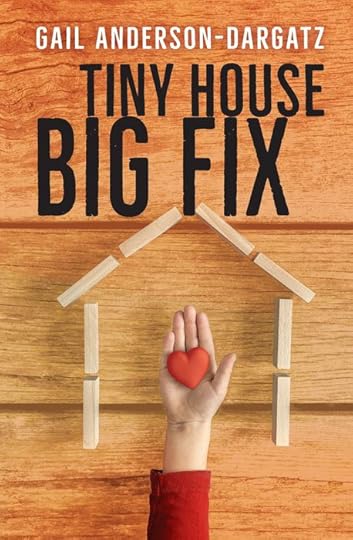
Of the MANY bait-and-switch books I've been tricked into reading, this takes the prize for the biggest switch. The back cover says it's about a single mom carpenter who builds a tiny house for herself and her daughters to live in. The title is about tiny houses. There is a tiny house on the cover. I read the book because I thought it would be about building a tiny house.
The book is actually about the events leading up to her building the tiny house. She doesn't build the tiny house until the LAST CHAPTER. It takes up about four pages.
 comments
comments
Published on August 16, 2025 15:32
August 15, 2025
Trapped, by Michael Northrop
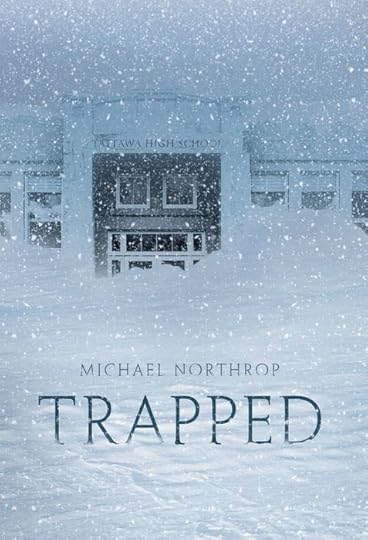
Seven teenagers get trapped in their high school during a blizzard when they miss the bus that evacuated the rest of the school.
This was easily the worst book I've read all year, and I've read some doozies. I read it because I'd bought a copy for the shop for the niche of "children's/younger YA survival books for kids who've already read all of Gary Paulson and "I Survived."" I am going to return it to the publisher (Scholastic, which should be ashamed of itself) forthwith, because it is AWFUL.
Why is this book so bad?
1. It's incredibly misogynist. The narrator, Scotty Weems, is constantly thinking of girls in a gross, slimy, objectifying way.
The two girl characters, who get trapped in the high school along with five boys, never do anything useful. One's entire personality is "hot" and every time she's mentioned, it's with a gross leering description of her body. The other girl's entire personality is "hot girl's friend."
2. The characters have exactly one characteristic each, and even that one often gets forgotten, to the extent that I kept mixing up "normal boy" with "mechanically inclined boy." The others are "dangerous boy" and "weird boy." The latter gets downgraded to "not actually weird, just funny" (as in makes one supposedly humorous comment once.) We get no insight into them, their backstories, their home lives, etc, because none of them ever really talk to each other about anything interesting despite being trapped together for a week!
3. SO MANY gross descriptions of pimples, peeing, and pooping.
4. The book is boring. No one does anything interesting on-page until the second to last chapter, when it FINALLY occurs to Scotty to make snowshoes. Most of the book is Scotty's inner monologue about pimples, pooping, peeing, and hot girls. The kids barely interact!
5. The kids keep saying that help won't come because no one even knows they're missing, but that makes no sense. Every single one of them was supposed to get picked up. It's never explained why SEVEN DIFFERENT FAMILIES wouldn't notice that their kids never came home.
6. The incredibly contrived scene where Best Friend Girl comes staggering in screaming and disheveled, repeating, "Les, Les!" This is the name of Dangerous Boy. One of Indistinguishable Boys assumes Les sexually assaulted her and runs out and attacks Les. Best Friend Girl recovers enough to explain that she went to a room and it was dark and cold and she got lost, and she was trying to say there was LESS light and heat there. Because that's what you'd naturally gasp out when freaking out, instead of, say, "Dark! Cold!"
I feel like the existence of this scene in a PUBLISHED BOOK lowered the collective intelligence of the universe by at least half a point.
7. No interesting use is made of the school setting. The kids open their own lockers to get extra clothes and snacks, find pudding and canned peaches in the cafeteria, and spend the rest of the time silently huddled in classrooms, occasionally checking their useless cellphones that don't have any signal. Toward the end, they start a fire, and then, OFF-PAGE, construct a snowmobile (!).
Things they don't do: Break into other kids' lockers in the hope of finding useful stuff. Attempt to cook the cafeteria food. Search the library for survival tips. Get mats from the gym so they're not sleeping on freezing floors. Search classrooms and the teacher's lounge for useful stuff. Have a pick-up ball game to keep warm. Find ways of entertaining themselves without cell phones. HAVE GETTING TO KNOW YOU CONVERSATIONS - WHAT IS THE POINT OF DOING THE BREAKFAST CLUB WITHOUT THIS?
Spoilers! ( Read more... )
Truly terrible.
ETA: I just discovered that it went out of print soon after I purchased it (GOOD) and so is not returnable (DAMMIT).
 comments
comments
Published on August 15, 2025 09:55
August 14, 2025
Hominids, by Robert Sawyer
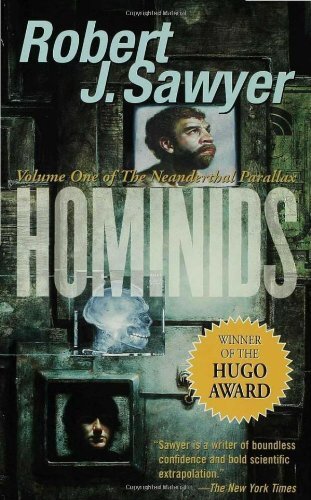
A Neanderthal from an alternate universe where Homo Sapiens went extinct and Neanderthals lived into the present day is sucked into our world due to an experiment gone wrong. The book follows his interactions with humans in one storyline, and the repercussions in Neanderthal World in another.
I picked up this book because I like Neanderthals and alternate dimensions that aren't about relatively recent history (ie, not about "What if Nazis won WWII?"). The parts of the book that are actually about Neanderthal World are really fun. It's a genuinely different society, where men and women live separately for the most part, surveillance by implanted computers prevents most crime, mammoths and other large mammals did not go extinct, there are back scratching posts in homes, they wear special eating gloves rather than using utensils or eating barehanded, etc. This was all great.
The problem with this book was everything not directly about Neanderthal society. Bizarrely, this included almost the entire plotline on Neanderthal World, which consisted of a murder investigation and trial of the missing Neanderthal's male partner (what we would call his husband or lover), which was mostly tedious and ensured that we see very little of Neanderthal society. The Neanderthal interactions on our world were fun, but the non-Neanderthal parts were painful. There is a very graphic, on-page stranger rape of the main female character, solely so she can realize that Neanderthal dude is not like human men. There's two sequels, which I will not read.
It got some pretty entertaining reviews:
"☆☆☆☆☆1 out of 5 stars.
No. JUST NO.
I am sorry, but the premise of inherently and innately peaceful cultures with more advanced technology than conflict-driven cultures is patently absurd. Read Alistair Reynolds' Century Rain for an examination of how technological advancement depends on strife: necessity is the mother of invention, and the greatest necessity of all is fighting for survival. I will not be lectured for my male homosapien hubris by a creature that would never have gotten past the late neolithic in technology."
Hominids won a Hugo! Here are the other nominees.
1st place: Hominids by Robert J. Sawyer (Canadian)
2nd place: Kiln People by David Brin (American)
3rd place: Bones of the Earth by Michael Swanwick (American)
4th place: The Scar by China Miéville (British)
5th place: The Years of Rice and Salt by Kim Stanley Robinson (American)
Amazingly, I have read or attempted to read all of them. My ratings:
1st place: Bones of the Earth by Michael Swanwick (American)
2nd place: The Scar by China Miéville (British).
3rd place: The Years of Rice and Salt by Kim Stanley Robinson (American)
4th place: Hominids by Robert J. Sawyer (Canadian)
5th place: Kiln People by David Brin (American)
If I'd voted, it would be very close between Bones of the Earth and The Scar, both of which I loved. I made a valiant attempt at The Years of Rice and Salt. Like all of KSR's books, I'm sure it's quite good but not for me. I know I read Kiln People but recall literally nothing about it, so I'll give Hominids a place above it for having some nice Neanderthal stuff.
The actual ballot is a complete embarrassment.
 comments
comments
Published on August 14, 2025 10:31
August 13, 2025
The Journey, by Joyce Carol Thomas
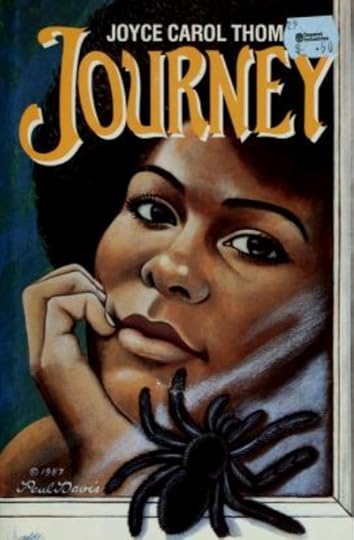
This is one of the most unusual books I've ever read. And if you've been reading my reviews for a while, you know what a strong statement that is. Here's the buries-the-lede back cover:
The town's teenagers are dying. One by one they are mysteriously disappearing but Meggie Alexander refuses to wait in fear. She and her boyfriend Matthew decide to get to the bottom of all the strange goings-on. And they discover a horrible secret.
Now someone is stalking them - but who? There's only one thing that can save Meggie now - the stories a tarantula told her as a baby.
Bet you weren't expecting that, huh?
This was a Scholastic novel from 1988. I'd seen other Thomas novels in that period but never read them, because they all looked like depressing historicals about the black experience - the one I recall seeing specifically was Touched by Fire. I sure never saw this one. I found it in the used children's section of The Last Bookstore in downtown LA.
Any description of this book won't truly convey the experience of reading it, but I'll give it a shot. It starts with a prologue in omniscient POV, largely from the POV of a talking tarantula visiting Meggie soon after she's born, chatting and spinning webs that tell stories to her:
"I get so sick and tired of common folk trying to put their nobody feet on my queenly head. Me? I was present in the first world. Furthermore," the spider boasted, squinting her crooked eyes, "I come from a looooong line of royalty and famous people. Millions of years ago I saw the first rainbow. I ruled as the Egyptian historical arachnid. I'm somebody."
As I transcribe that, it occurs to me that she shares some DNA with The Last Unicorn's butterfly.
The prologue ends when Meggie's mother spots the spider and tries to kill her, believing her daughter is in danger. Chapter one opens when Meggie is fifteen. Briefly, it feels like a YA novel about being black and young in (then)-modern America, and it kind of is that, except for the very heightened writing style, including the dialogue. Thomas is a poet and not trying to write in a naturalistic manner. It's often gorgeous:
She ended [the sermon] with these resounding words falling quiet as small sprinklings of nutmeg whispering into a bowl of whipping cream.
The milieu Meggie lives in is lived-in and sharply and beautifully drawn, skipping from a barbershop where customers complain about women preaching to a quick sketch of a neighborhood woman trying to make her poor house beautiful and not noticing that its real beauty lies in her children to Meggie's exquisitely evoked joy in running. And then Meggie finds the HEADLESS CORPSE of one of her classmates! We check in on a trio of terrible neighbors plotting to do something evil to the town's teenagers! The local spiders are concerned!
This book has the prose one would expect to find in a novel written by a poet about being a black teenager in America, except it's also about headless corpses and spider guardians. It is a trip and a half.
( Read more... )
I am so glad that Thomas wrote this amazingly weird novel, and that someone at the bookshop bought it, and that I just happened to come in while it was on the shelf. It's like Adrian Tchaikovsky collaborated with Angela Johnson and Lois Duncan. There has never been anything like it, and there never will be again. Someone ought to reprint it.
 comments
comments
Published on August 13, 2025 10:37
August 12, 2025
Troubled Waters, by Sharon Shinn
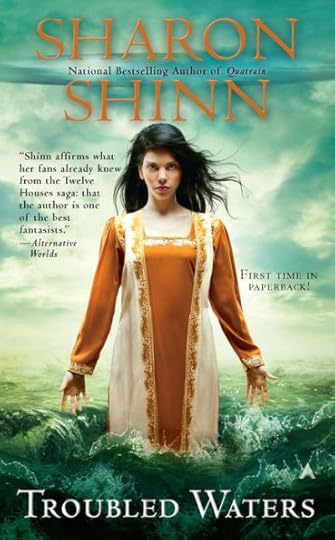
Zoe Ardelay and her father have lived in exile in a small village since he, a former courtier, had an argument with the king. At the opening of the book, her father has just died of natural causes. Then Darien, the king's advisor, shows up and announces that Zoe has been chosen as the king's fifth wife. Zoe, immersed in the drifting, passive phase of grief, sets out with him for the capital city she hasn't seen since she was a child. The story does not go in any of the expected directions after that, starting with the conveyance they use to get there: a new invention, a gas-powered automobile.
This small-scale fantasy is the first of five "Elemental Blessings" books, but stands alone. It does end up involving the politics and rulership of a country, but it's mostly the story of one woman, how her life changes after her father dies, and the relationships she has with the people she meets. It's got great characters and relationships, focuses on small but meaningful moments in a very pleasing manner, and has outstandingly original worldbuilding. Most of it is not set in court, and involves ordinary poor and middle-class people and settings. The vibe is reminiscent of early Robin McKinley.
Welce, the country it's set in, has two aspects which are crucial to both plot and character, and are interestingly intertwined. They may seem complicated when I explain them, but they're extremely easy to follow and remember in the actual book.
The first aspect is a system of elemental beliefs and magic, similar to a zodiac. The elements are water, air, fire, earth, and wood. Every person in the country is associated with one of those elements, which is linked with personality characteristics, aptitudes, aspects of the human body, and, occasionally, magic. This is all very detailed and cool - for instance, water is associated with blood, wood with bone, and so forth. We've all seen elemental systems before, but Shinn's is exceptionally well-done. The way the elemental system is entwined with everyday life is outstanding.
How do people know which element is theirs? Here's where we get to the second system, which I have never come across before. Temples, which are not dedicated to Gods but to the five elements, have barrels of blessings - coins marked with symbols representing blessings like intelligence, change, courage, joy, and so forth. Each blessing is associated with an element. People randomly pull coins for both very important and small occasions, to get a hint of what way they should take or, upon the birth of a child, to get three blessings that the child will keep for life. The blessings a child gets may or may not show their element - if they don't, it becomes clear over time based on personality.
The blessings are clearly genuinely magical and real, but often in subtle ways. I loved the blessings and the way they work into the story is incredibly cool. Same with the elements. Zoe's element is water, and her entire plot has a meandering quality which actually does feel like a water-plot, based on the qualities ascribed to water in the book.
I would recommend this to anyone who likes small-scale, character-based fantasy AND to anyone who likes cool magic systems or worldbuilding. It's not quite a cozy fantasy but it has a lot of cozy aspects. I can see myself re-reading this often.
There are five books, one for each element. I've since read the second book, Royal Airs. It's charming and enjoyable (and involves primitive airplanes, always a bonus) but doesn't quite have the same lightning in a bottle quality of Troubled Waters.
 comments
comments
Published on August 12, 2025 12:48
August 8, 2025
Super Boba Cafe # 1, by Nidhi Chanani
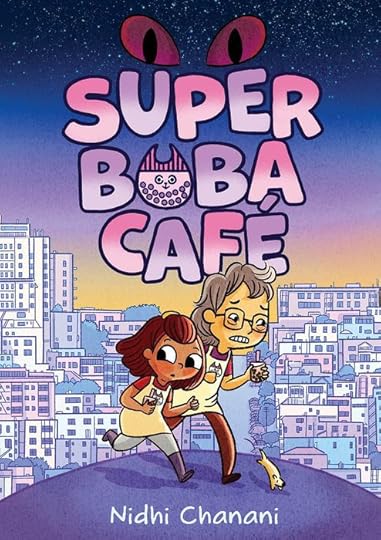
A middle-grade graphic novel about a boba shop with a secret.
Aria comes to stay with her grandmother in San Francisco for the summer to escape a bad social situation. Her grandmother owns a boba shop that doesn't seem too popular, and Aria throws herself into making it more so - most successfully when Grandma's cat Bao has eight kittens, and Aria advertises it as a kitten cafe. But why is Grandma so adamant about never letting Aria set foot in the kitchen, and kicking out the customers at 6:00 on the dot? Why do the prairie dogs in the backyard seem so smart?
This graphic novel has absolutely adorable illustrations. The story isn't as strong. The first half is mostly a realistic, gentle, cozy slice of life. The second half is a fantasy adventure with light horror aspects. Even though the latter is throughly foreshadowed in the former, it still feels kind of like two books jammed together.
My larger issue was with tone and content that also felt jammed together. The book is somewhat didactic - which is fine, especially in a middle-grade book - but I feel like if the book is teaching lessons, it should teach them consistently and appropriately. The lessons in this book were a bit off or inconsistent, creating an uncanny valley feeling.
Spoilers! ( Read more... )
Fantastic art, kind of odd story.
 comments
comments
Published on August 08, 2025 14:15
August 6, 2025
The Bog Wife, by Kay Chronister
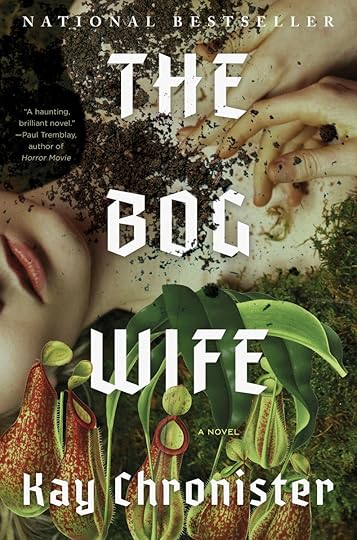
The Haddesley family has an ancient tradition: when the patriarch dies, the oldest son summons a wife from the bog. Now living in Appalachia, the current patriarch is dying and a new bog wife must be summoned soon, but their covenant with the bog may be going wrong: one daughter fled years ago to live in the modern world, the last bog wife vanished under mysterious circumstances, the bog is drying up, and something very bad has happened to the oldest son...
Isn't that an amazing premise? The actual book absolutely lives up to it, but not in the way that I expected.
It was marketed as horror, and was the inaugural book of the Paper & Clay horror book club. But my very first question to the club was "Do you think this book is horror?"
The club's consensus was no, or not exactly; it definitely has strong folk horror elements, but overall we found it hard to categorize by genre. I am currently cross-shelving it in literary fiction. We all loved it though, and it was a great book to discuss in a book club; very thought-provoking.
One of the aspects I enjoyed was how unpredictable it was. The plot both did and didn't go in directions I expected, partly because the pacing was also unpredictable: events didn't happen at the pace or in the order I expected from the premise. If the book sounds interesting to you, I recommend not spoiling yourself.
The family is a basically a small family cult, living in depressing squalor under the rule of the patriarch. It's basically anti-cottagecore, where being close to nature in modern America may mean deluding yourself that you're living an ancient tradition of natural life where you're not even close to being self-sustaining, but also missing all the advantages of modern life like medical treatment and hot water. I found all this incredibly relatable and validating, as I grew up in similar circumstances though with the reason of religion rather than an ancient covenant with the bog.
The family has been psychologically twisted by their circumstances, so they're all pretty weird and also don't get along. I didn't like them for large stretches, but I did care a lot about them all by the end, and was very invested in their fates. (Except the patriarch. He can go fuck himself.)
It's beautifully written, incredibly atmospheric, and very well-characterized. The atmosphere is very oppressive and claustrophobic, but if you're up for the journey, it will take you somewhere very worthwhile. The book club discussion of the ending was completely split on its emotional implications (not on the actual events, those are clear): we were equally divided between thinking it was mostly hopeful/uplifing with bittersweet elements, mostly sad with some hopeful elements, and perfectly bittersweet.
SPOILERS!
( Read more... )
 comments
comments
Published on August 06, 2025 10:45
July 31, 2025
Katabasis, by R. F. Kuang
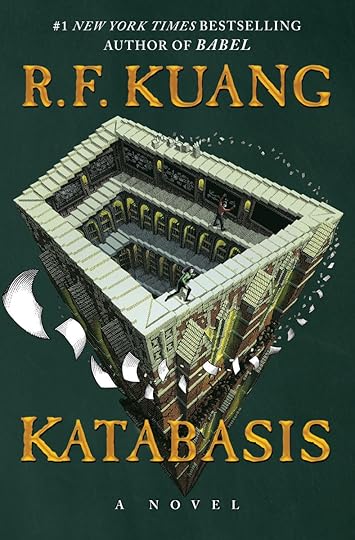
Katabasis releases at the end of August. I read an advance copy.
I have to conclude that R. F. Kuang's fiction is just not to my taste. This is the first book of hers that I even managed to finish, having previously given up on both Babel (anvillicious, with anvillicious footnotes) and The Poppy War (boring) quite early on. However, a lot of my customers love her books, so I will buy and sell multiple copies of this one.
The structure and concept of Katabasis is quite appealing. Alice Law is at magic college, obsessively determined to succeed. When exploitative working conditions lead to her making a mistake that gorily kills her mentor Professor Grimes, Alice still needs his recommendation... so she goes to Hell to fetch him back! She's followed by another student, Peter, who is a perfect genius who she doesn't realize is in love with her. Their journey through Hell takes up almost all of the book, interspersed by flashbacks to college.
Lots of people will undoubtedly love this book. I found it thuddingly obvious and lacking in charm. The humor was mildly amusing at best. The magic is boring and highly technical. Alice is frustratingly oblivious, self-centered, and monomaniacal - which is clearly a deliberate character choice, but I did not enjoy reading about her. Hell was boring - how do you make Hell boring?!
Spoilery reveal about Peter: ( Read more... )
The entire book, I felt like I was sitting there twiddling my fingers waiting for Alice to figure out that it's not okay for college to be exploitative and abusive, that it was bad for Professor Grimes to have sexually assaulted her, that Peter loved her, and that success isn't everything. Though at least it didn't have anvillicious footnotes [1] like Babel!
[1] Legally and morally, Professor Grimes sexually assaulted Alice. It is common for survivors of sexual assault to not recognize it as such at the time, especially when the assault involves an abuse of power. [2]
[2] It is an abuse of power for a professor to make any sexual overture to a student, even a seemingly consensual [3] one.
[3] Due to the power differential, no sexual relations between a professor and a student can ever be truly consensual.
I will continue to stock Kuang's books but this is probably the last time I will attempt to actually read one.
I do love the cover.
 comments
comments
Published on July 31, 2025 10:30
July 30, 2025
rachelmanija @ 2025-07-30T11:50:00
Published on July 30, 2025 11:50

 comments
comments


